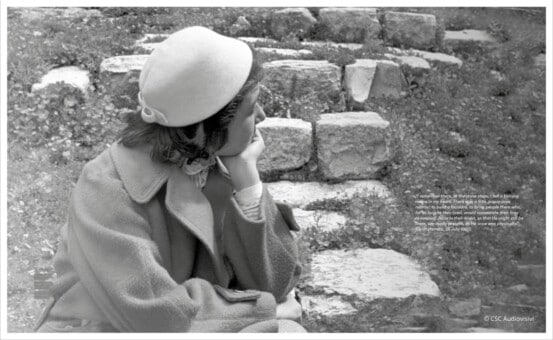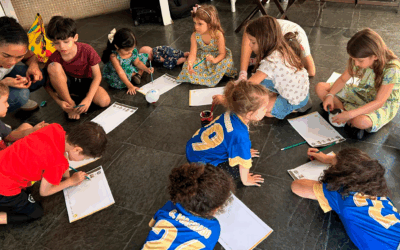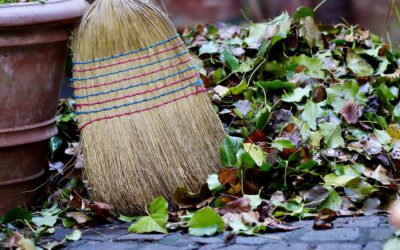The “Chiara Lubich City World” exhibition has been inaugurated in the Holy City, the first of the exhibitions outside Italy to be opened. It includes a section dedicated to Chiara Lubich’s visit to the Holy Land in 1956. “I didn’t think Jerusalem and its Holy Sites would affect my soul like that (…) every stone said a word, much more than a word, so that, in the end, my soul was all bathed and entirely filled with the presence of Jesus” . Chiara Lubich’s diary expressed her profound experience during the only journey she made to Jerusalem and the Holy Land, in 1956. Several black and white photographs and a video journal recall that journey, but the greatest testimony is the active presence of the community of the Focolare Movement in this city, which on February 29th, 2020, inaugurated the “Chiara Lubich City World” exhibition housed in the Curia of the Custody of the Holy Land. The exhibition is open until March 14th, 2020. The exhibition reproduces the one currently open to the public at The Tunnels Gallery at Piedicastello in Trent (Italy), curated by the Chiara Lubich Centre in collaboration with the Trentino Historical Museum Foundation. It is the first of the international sections of the Chiara Lubich City World exhibition, which will also be held in Mexico City, Sydney, Mumbai, San Paolo, Algiers and Nairobi in the year dedicated to the centenary of Chiara Lubich’s birth. Jerusalem’s primacy is symbolic as the city-cradle of the three great monotheistic religions, and home to many peoples. The community of the Focolare Movement has been here since 1977 with the mandate to contribute to the fulfilment of the unity for which, in this very land, Jesus prayed to the Father.  The Jerusalem exhibition reflects the original while being someone reduced and adapted. It conveys significant moments in the life of the founder of the Focolare Movement, her thought and work, through documents, handwritten texts and photographic material. But this edition has its own specific characteristics, available only to those who visit it here: a section dedicated to the relationship between the founder of the Focolare Movement and Jerusalem, as Claudio Maina, jointly responsible for the Focolare Movement in the Holy Land, explained. “We wanted to bring this exhibition to Jerusalem to make Chiara’s life, spirituality and work better known, but also to bear witness to her relationship with this city. Actually, Chiara only came to Jerusalem once, just for a few days. But from that visit a story began that continues today. Indeed, here in the Holy Land, there are people who have welcomed Chiara’s spirituality and are living it”. Part of the exhibition is dedicated to Chiara’s great dream for this city so deeply marked by divisions and historical wounds: to create a centre of spirituality, study, dialogue and formation to unity. “It’s a dream, an intuition that gradually took shape – said Terese Soudah – in the project for the International Centre for Unity and Peace, a project that we have been working on for years and that, despite many difficulties, is progressing and we hope to be able to conclude soon”. Dignitaries attending the inauguration included the Nuncio and Apostolic Delegate to Jerusalem, Archbishop Leopoldo Girelli, the representative of the Latin Patriarchate, Father Stéphane Milovitch, director of the Cultural Heritage Office of the Custody of the Holy Land, as well as Christian, Jewish and Muslim friends, who make up the Focolare family in the Holy Land. Due to the Coronavirus emergency, the Italian delegation was unable to attend, but sent video contributions. In this way, the President of the Autonomous Province of Trent, Maurizio Fugatti, wished every success to the exhibition; to bring to the world the message that Chiara Lubich gave to the Trentino Region and to Italy. The Custos of the Holy Land, Father Francesco Patton, expressed his hope that, through this exhibition, Chiara’s spirituality would remind this troubled land of the value of unity, the fruit of Jesus’ prayer, which is still so relevant today. In a video-message, Anna Maria Rossi and Giuliano Ruzzier, curators of the exhibition in Trent, along with Maurizio Gentilini, presented the exhibition itinerary: “We created a project that isn’t limited to the city of Trent, but, as happened in Chiara’s life, can reach the ends of the earth, encompassing all five continents”. At the ribbon-cutting ceremony, the Nuncio, Archbishop Girelli, recalled the extreme relevance of Chiara’s message: “Here in Jerusalem, we could invert the words of the exhibition’s title and call it: “Chiara Lubich World City”, because this exhibition has come from the world to the city par excellence, the Holy City, the city of unity, of fraternity, of dialogue among religions and among peoples”.
The Jerusalem exhibition reflects the original while being someone reduced and adapted. It conveys significant moments in the life of the founder of the Focolare Movement, her thought and work, through documents, handwritten texts and photographic material. But this edition has its own specific characteristics, available only to those who visit it here: a section dedicated to the relationship between the founder of the Focolare Movement and Jerusalem, as Claudio Maina, jointly responsible for the Focolare Movement in the Holy Land, explained. “We wanted to bring this exhibition to Jerusalem to make Chiara’s life, spirituality and work better known, but also to bear witness to her relationship with this city. Actually, Chiara only came to Jerusalem once, just for a few days. But from that visit a story began that continues today. Indeed, here in the Holy Land, there are people who have welcomed Chiara’s spirituality and are living it”. Part of the exhibition is dedicated to Chiara’s great dream for this city so deeply marked by divisions and historical wounds: to create a centre of spirituality, study, dialogue and formation to unity. “It’s a dream, an intuition that gradually took shape – said Terese Soudah – in the project for the International Centre for Unity and Peace, a project that we have been working on for years and that, despite many difficulties, is progressing and we hope to be able to conclude soon”. Dignitaries attending the inauguration included the Nuncio and Apostolic Delegate to Jerusalem, Archbishop Leopoldo Girelli, the representative of the Latin Patriarchate, Father Stéphane Milovitch, director of the Cultural Heritage Office of the Custody of the Holy Land, as well as Christian, Jewish and Muslim friends, who make up the Focolare family in the Holy Land. Due to the Coronavirus emergency, the Italian delegation was unable to attend, but sent video contributions. In this way, the President of the Autonomous Province of Trent, Maurizio Fugatti, wished every success to the exhibition; to bring to the world the message that Chiara Lubich gave to the Trentino Region and to Italy. The Custos of the Holy Land, Father Francesco Patton, expressed his hope that, through this exhibition, Chiara’s spirituality would remind this troubled land of the value of unity, the fruit of Jesus’ prayer, which is still so relevant today. In a video-message, Anna Maria Rossi and Giuliano Ruzzier, curators of the exhibition in Trent, along with Maurizio Gentilini, presented the exhibition itinerary: “We created a project that isn’t limited to the city of Trent, but, as happened in Chiara’s life, can reach the ends of the earth, encompassing all five continents”. At the ribbon-cutting ceremony, the Nuncio, Archbishop Girelli, recalled the extreme relevance of Chiara’s message: “Here in Jerusalem, we could invert the words of the exhibition’s title and call it: “Chiara Lubich World City”, because this exhibition has come from the world to the city par excellence, the Holy City, the city of unity, of fraternity, of dialogue among religions and among peoples”.
By Stefania Tanesini




0 Comments